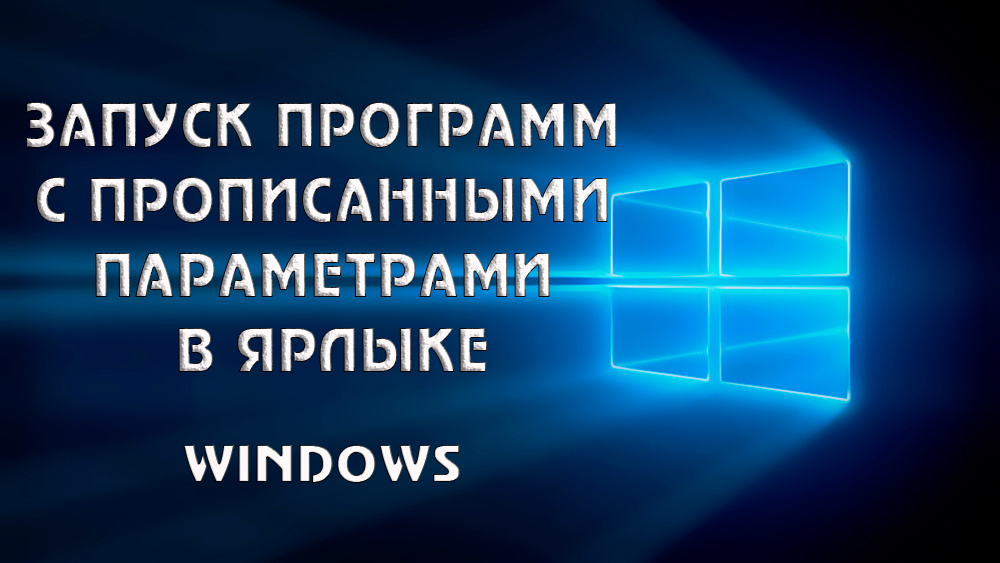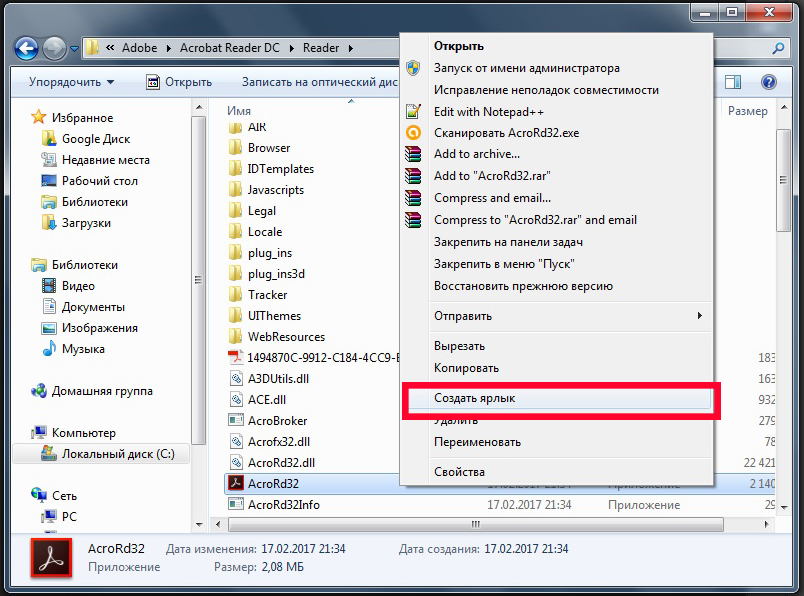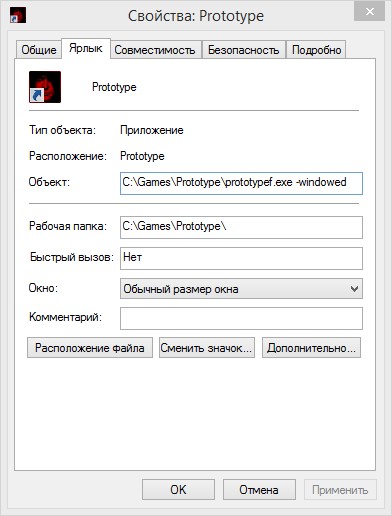Every day we use various computer programs to perform a wide variety of tasks. Some of them have a large number of settings and features, and in order to use all of them, you need to perform a lot of manipulations. For example, you regularly use several modes of the application, enter the username and password of the user, apply special modes. In addition to office workers, gamers often need such opportunities. All these manipulations can take a significant amount of effort and time, and simply annoying.

Reflection of application start conditions in a shortcut simplifies work with programs.
It is worth noting that such a need, which was mentioned above, occurs extremely rarely, and for the most part is solved effortlessly by the application or game settings themselves.
Based on this, the whole issue should be considered only as an additional opportunity for extended software launch, because the expediency of such actions is doubtful, and they definitely will not save time for the user.
The Windows operating system provides each user with the opportunity to prescribe launch options in the program shortcut. Within the framework of the question under consideration, instead of switching between menu items, you can create several shortcuts with the desired parameters once, place them on the desktop or taskbar, and in Windows 8 and 10 on the start screen, and launch the program with the desired parameters with one click buttons.
All these parameters are written in shortcuts, which are special files with a link to the executable file. You do not need to go to the folder where the software is installed every time and look for the startup file. In this article, we’ll take a look at how to greatly expand your options when working with software and learn how to set launch options on the command line of a shortcut on the desktop. We will divide the whole procedure into two stages.
Contents
How to write program launch options in a shortcut
Stage 1. Selecting the executable file and transferring the shortcut to the desktop
Despite the fact that in the vast majority of cases, when installing software, the launch icon is placed on the desktop, in some cases this does not happen. Then you need to find the executable yourself. How?
- When installing the application, carefully follow which folder the installer suggests choosing. Usually this is “C:Program Files” or “C:Program Files (x86)”. Most developers provide the ability to choose the default folder yourself, but if you do not change the proposed option, the program will be installed exactly in the specified folder.
- Through Windows Explorer, go to the directory where the software is installed and find the startup file. It has an .exe extension. Often its name coincides with the name of the software itself. If you cannot decide, try to find out this information on the official website of the developer in the help section or in the technical support service.
- Right-click on the file name and select “Create Shortcut”.
- Confirm the system prompt “Windows cannot create a shortcut in this folder. Put it on the desktop?”.

If you do not remember in which folder the software is installed, you can do the following:
- Go to the Start menu, find the software you need in the list (you can even use the search function to speed up the process).
- Click on the name of the right mouse button and select Send – Desktop (create shortcut).
If you are using Windows 10, the procedure will be slightly different:
- Go to the start screen by pressing the Start button.
- Find the program launch icon in the list of all applications or on the home screen.
- Right-click, select More – Go to file location.
- After the Windows Explorer window opens, copy the icon to the desktop through the context menu or simply by dragging it to the desired location.
Finally – the easiest way . Just click the right mouse button on the desired file and, without releasing, drag it to the desktop. There, release the button and a menu will appear – select “Create Shortcuts” in it.
Step 2: Specify launch options
After we have successfully transferred the icon to the desktop, let’s specify the necessary parameters in its properties. For this you need:
- Right-click on the icon and select “Properties”.
- In the menu that opens, go to the “Shortcut” tab and find the line “Object”. You will see that the input field in it is active. It is here that we will prescribe the necessary commands.
- After entering the required data at the bottom of the window, click Apply – OK.

The parameters are written in the “Object” line, at the very end. There can be several of them and they are separated by spaces. Each parameter is preceded by a “-“. For example, for a Prototype game, adding “-windowed” to the end of the line means that it will immediately start in windowed mode, and not in full screen.

What commands to write
Having figured out how to write startup commands, let’s try to figure out what exactly to write. Unfortunately, there are no universal commands that work for absolutely all programs. Therefore, if you want to create shortcuts for quick launch with the specified parameters, you will have to study the program’s help or contact the developers’ technical support service.
Very often, such information is indicated on the official forums of the application or game. More experienced users or representatives of developers or copyright holders publish detailed information there.
Returning to what was said at the beginning of this article. The indication of parameters received its greatest relevance during the period of mass interest in the game called “Counter-Strike”. Why this interest has received such a spread specifically on “CS” is an ambiguous question, someone used it solely for entertainment, someone (like some professional players, for example) in order to maximize the individualization of the gameplay.
For example, here is a list of options for the game “Counter-Strike: Global Offensive” that some users use at startup:
| Parameter | Meaning |
| -novid | Turning off the intro movie |
| -w 640 -h 480 | Installing an extension |
| -console | Console activation |
| -freq 120 | Setting a Screen Refresh Rate Limit |
| -high | Run with higher priority |
| -condebug | Saving logs |
| -low | Run with reduced priority |
| -noaafonts | Disable anti-aliasing |
| -nosync | Deactivate vertical sync |
| -fullscreen | Run in full screen mode |
| -language English | Language setting |
Conclusion
To what extent the above procedure is expedient and relevant now is up to everyone to decide for themselves, and in the comments we invite you to discuss this topic, and also talk about which programs you run with the launch parameters. This information may be useful to someone.